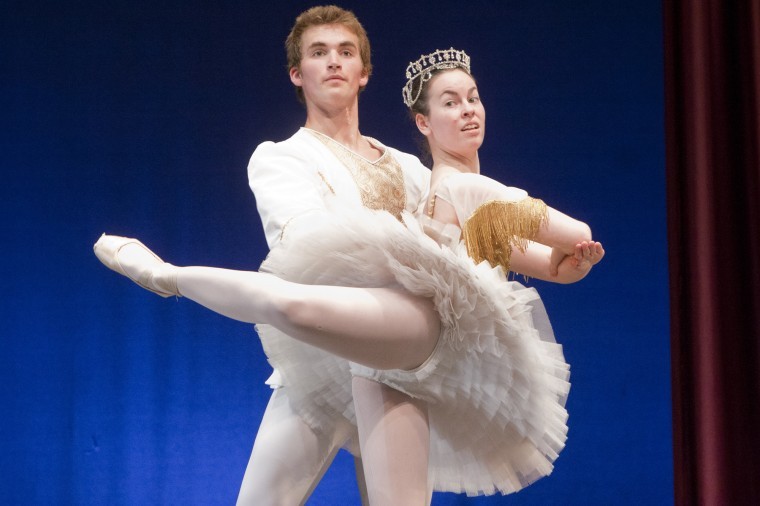School of Theatre and Dance to perform Siècle de Ballet
April 25, 2012
Time travel is still impossible, but the School of Theatre and Dance is doing the best it can.
Siècle de Ballet, French for “Century of Ballet,” runs 7:30 p.m. Thursday through Saturday and 2 p.m. Sunday at the O’Connell Theatre in the Stevens Building. Tickets are $16 for adults, $13 for seniors and $8 for students.
The event combines two ballets, the classic Raymonda, originally choreographed by Marius Petipa, and the contemporary Sunrise in the Quantum, choreographed by professor Brian Carey Chung. These two pieces show the development of ballet and highlight the beauty of both classical and modern styles.
Professor Judith Quirk Chitwood re-choreographed Raymonda, famously choreographed by Petipa in the 1890s. Petipa is responsible for such classic works as Swan Lake and The Nutcracker.
Ballet has an interesting history. It came from court dancers in western Europe in the 17 and 1800s, Chitwood said. She said it evolved from the court dancers to professional dancers, but the regal style remained. The invention of pointe shoes changed women in ballet into “unearthly creatures,” she said.
That evolution continues today, and contemporary ballet has earned a place among the classics.
Chung choreographed Sunrise in the Quantum in 2010 and performed it with his company, Collective Body Dance Lab. He was inspired by quantum physics and the behavior of sub-atomic particles.
“In the quantum…a particle can disappear and reappear,” Chung said. “Yet in our world, as we see it, we cannot do that. Why is it that something inside us that’s a part of us can behave so dramatically different than the larger body? The piece plays with this idea.”
The two choreographers expressed a love for both classical and modern ballet, and this performance serves as an opportunity for students to understand and appreciate the differences as well.
“I can’t say I prefer one over the other,” Chitwood said. She was trained in classical, but she recognizes that modern ballet has its own aesthetic, beauty and artistic value to it, she said.
Chung agrees.
“There is beauty in both,” he said. “I appreciate both. However, I do think that classicists are a bit closed off to change, and that hinders the development of new art in this country. In Europe it isn’t the same. We are coming out of our shell, but ever so slowly.”







